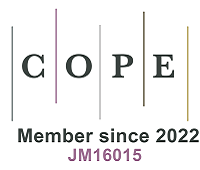fig4

Figure 4. (A) Schematic illustration of the adjustability of EMNZ properties, quoted with permission from Dai et al.[33]; (B) The Lorentz model and Drude model of the ENZ materials, quoted with permission from Kinsey et al.[34]; (C) In a PC slab with a square lattice, an electrical monopole mode (the upper right panel) and a transverse magnetic (the lower left panel) form EMNZ, quoted with permission from Li et al.[36]; (D) Geometry of a 2D waveguide structure with an ENZ section to support the tunneling effect, quoted with permission from Silveirinha et al.[57]; (E) Sectional view of the ZIM cloaking shell covered by a metasurface, quoted with permission from Chu et al.[58]; (F) Photonic doping in the ENZ material, quoted with permission from Liberal et al.[59]; (G) Dispersion coding in the ENZ material based on photonic doping, quoted with permission from Zhou et al.[60]; (H) The enhanced absorption cross section when a resonator is doping, quoted with permission from Zhou et al.[76]; (I) ZIM can solve phase mismatching in the process of nonlinear propagation, quoted with permission from Suchowski et al.[77]; (J) Both BIC and ZIM realized in the daisy PC, quoted with permission from Minkov et al.[85]; (K) BIC (also called embedded eigenstate here) in a ENZ-dielectric-ENZ three-layered waveguide, quoted with permission from Monticone et al.[86]; (L) Concept of the secure targeted wireless power transfer, quoted with permission from Zanganeh et al.[87]; M: Magnetized gradient ENZ layer (the lower left panel) to realize broadband nonreciprocity breaking the classical Kirchhoff’s law (the upper panel), quoted with permission from Liu et al.[90]. EMNZ: Epsilon-and-mu-near-zero; PC: photonic crystal; ENZ: epsilon-near-zero; 2D: two-dimensional; ZIM: zero-index material; BIC: bound state in the continuum.










